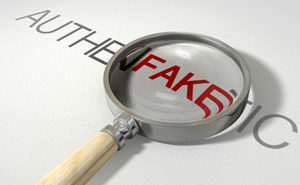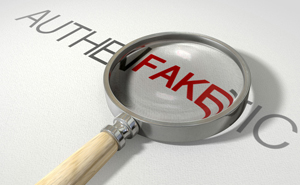
Recent studies show that students and adults alike have little trouble finding news, but they have a much harder time discerning whether it is true.

As soon as students begin online research, educators should tackle the question of fake news with them. Students should be taught to recognize certain characteristics of fake news.
To best serve students, a modern education must first start with teaching students to ask “Is it real or is it fake?”
Misconceptions about what constitutes truth
Researchers at Stanford University learned that students do a poor job of recognizing fake news. With so much student research happening online, this underscores why it is essential that teachers help students hone their ability to tell truth from fiction.
In another study, Northwestern University researchers discovered that students often base the value of an article on search engine returns — articles placed higher in Google’s rankings are often believed to be more reliable. This is not necessarily the case.
Because discerning real from fake news relies on a skill set developed through practice, educators need to begin teaching news literacy early on. As soon as students begin online research, educators should tackle the question of fake news with them. Students should be taught to recognize certain characteristics of fake news.
A 10-question fake-news test
The News Literacy Project, a national organization focused on helping students become informed citizens, has developed a 10-question tool to identify red flags in online news sources. These questions focus on not only evaluating the date and source of the information, but they also consider rhetorical aspects such as the headline’s intent to trigger an emotional reaction or encourage sharing.
Students introduced to these questions early in their researching life can internalize these checks and begin to use them with everything they read.
Teaching news literacy at every age
Recognizing fact or fiction in news articles should be introduced with a lesson that helps students understand the long-term drawbacks of relying upon fake news. Rachel Roberson has developed a lesson plan for KQED that walks older students through the negative influence of fake news. The lesson provides an additional set of questions or techniques for recognizing made-up media.
But age is no reason to wait to teach this key piece of media literacy. Using the News Literacy Project’s chart, teachers can work with younger students to examine fake news stories or internet memes as well. The lesson may feel rudimentary, but it will begin to imbue students with an impulse to fact-check what they read. If taught and reviewed routinely, this impulse will become a first-line defense in student research habits.
A crucial first step in media literacy
Recognizing fake news isn’t the full extent of media literacy, but it is important groundwork as students begin to develop rhetorical awareness. Using the News Literacy Project’s chart, students may come to conclude that news is true, but something still does not feel right. In an era where yellow journalism is as plaguing as fake news, it is essential that educators use the fake-news discussion as a starting point, but continue their media literacy work to help students recognize that passing the “fake or real” test is a first, not final, step in choosing best sources for research.
My next piece will explore further lessons in media literacy to help students distinguish, beyond “fake or real,” the manipulative tactics some articles use that may pass the fake-news sniff test but still don’t make for effective research.
Monica Fuglei is a graduate of the University of Nebraska in Omaha and a current faculty member of Arapahoe Community College in Colorado, where she teaches composition and creative writing.
